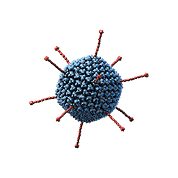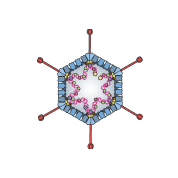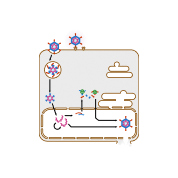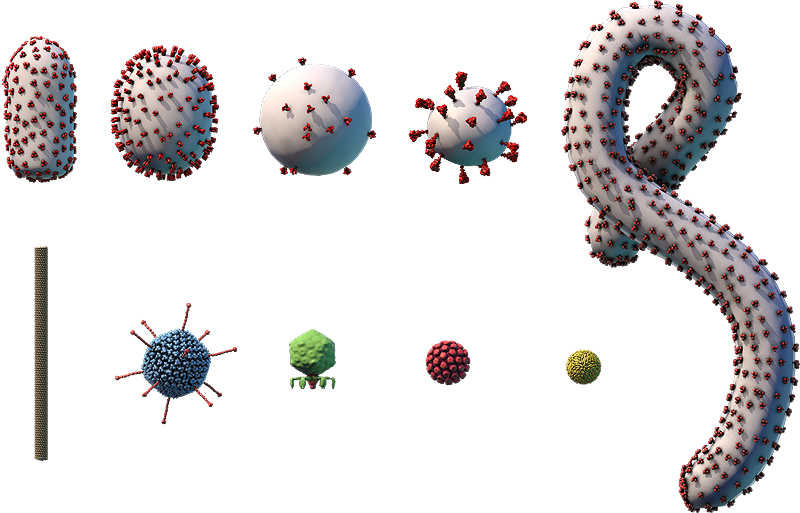Virus Explorer
Click and drag or use the buttons below to move the model.
Use the tab to focus one of the buttons above, and then space to start the rotation.
The proteins that make up the icosahedral-shaped capsid (blue) and fiber proteins (red) are shown.
Components on the virus are selectively represented in the 3D model for educational purposes.
A. Terminal protein; B. Core proteins; C. DNA genome; D. Minor capsid proteins; E. Major capsid proteins; F. Fiber protein
This diagram shows how adenoviruses replicate, or make copies of themselves. First, fiber proteins on an adenovirus’s surface bind to specific receptors on the host cell’s surface (A). This triggers a process known as endocytosis (B), which brings the virus into the cell in an enclosed structure (vesicle) called an endosome. Inside the endosome, the virus capsid disassembles (C). The remaining parts of the virus are released from the endosome (D), and its dsDNA genome travels to the nucleus.
With the help of the host cell’s machinery, the virus’s DNA is transcribed into mRNA (F), which is translated into proteins by ribosomes in the cytosol (G). Early in the infection, viral proteins are made to manipulate the host’s cell cycle to optimize cellular conditions for adenovirus replication. Later on, proteins are made to build new viruses and replicate the virus’s DNA genome (E).
Viral genomes and proteins are assembled into new viruses inside the nucleus (H). The new viruses break out through a process called cell lysis (I), which kills the host cell. In some cases, adenoviruses insert their DNA into the cell’s genome. The inserted viral DNA is replicated by the cell, and descendants of the host cell will also contain the viral DNA. Although new viruses are not actively produced, viral production may resume later depending on cellular conditions.
Adenovirus
- Adenoviridae family
- ~100-nm naked icosahedral capsid
- Linear dsDNA genome of varying sizes
- Infects humans and other mammals, birds, reptiles, fish, and amphibians
Adenoviruses are a family of viruses with 80 recognized species as of 2020.
Adenoviruses infect many different hosts, including birds, fish, reptiles, amphibians, and humans and other mammals. In humans, different adenoviruses cause many common, but relatively mild, conditions, such as pink eye, the common cold, and bronchitis.
Like phages, adenoviruses are used extensively in scientific research. Some adenoviruses have been engineered for use in gene therapy delivery systems.



